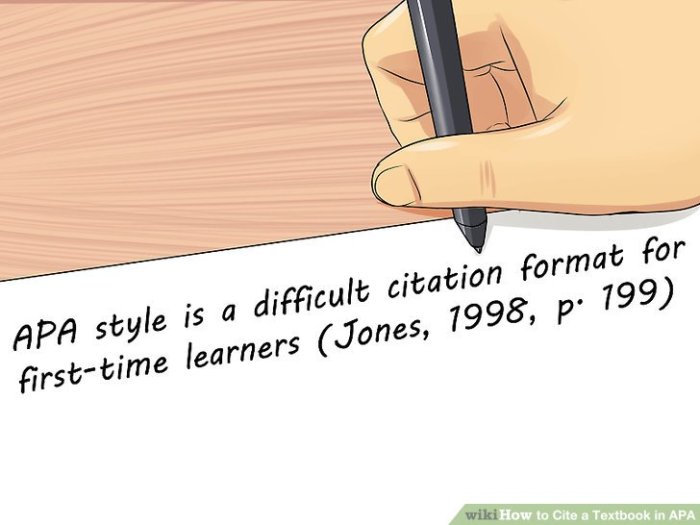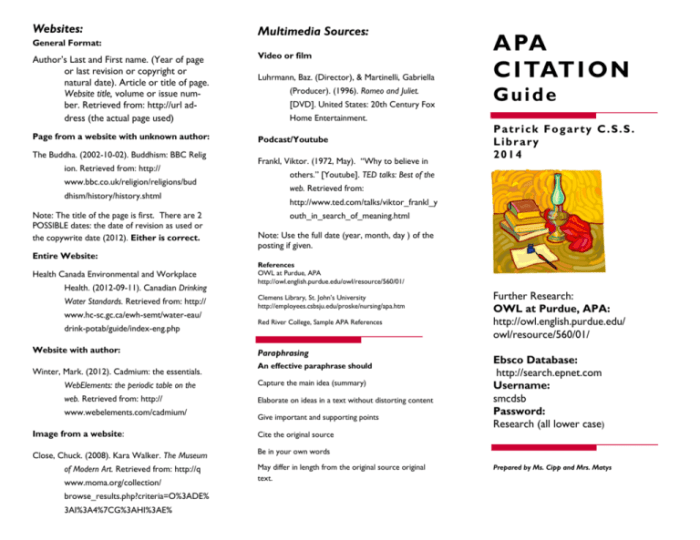How to APA citation Peter Afflerbach teaching readers, a comprehensive guide for educators and students alike, delves into the intricate world of academic citation. This journey through the nuances of proper citation, especially within the context of educational research, illuminates the significance of accurate attribution. Understanding the principles of APA style, coupled with the specifics of citing Peter Afflerbach’s impactful work, empowers you to effectively incorporate his research into your own writing.
This guide provides a roadmap, clear examples, and helpful strategies to navigate the complexities of academic citation, ensuring your work is both insightful and meticulously referenced.
This guide provides a detailed exploration of APA citation, focusing on the unique requirements for citing Peter Afflerbach’s research in educational contexts. We will cover everything from basic APA formatting to citing specific concepts and ideas from his works. We also will address the nuances of citing student projects that reference Afflerbach’s work. Illustrative examples will solidify your understanding, and practical application through real-world examples will make this knowledge truly actionable.
Finally, this guide will help you navigate complex citation scenarios and avoid common plagiarism pitfalls.
Illustrative Examples of Citations: How To Apa Citation Peter Afflerbach Teaching Readers

APA citation style is crucial for academic writing, ensuring proper attribution and allowing readers to easily locate the sources you use. Following these examples will help you cite Afflerbach’s work accurately and avoid potential plagiarism issues.Understanding the nuances of APA style ensures your work adheres to scholarly standards. Correct citation formats demonstrate your respect for intellectual property and your commitment to ethical academic practices.
Book by Peter Afflerbach
Peter Afflerbach’s book, “Teaching Readers to Read,” offers valuable insights into literacy instruction. To cite it in APA style, include the author, year of publication, title, and publisher.
- Afflerbach, P. (2018). Teaching readers to read. Guilford Press.
Article Co-authored by Afflerbach
Many of Afflerbach’s publications are in the form of articles. For articles co-authored, include all authors, the year, the title, the journal name, volume number, and page numbers.
- Afflerbach, P., & Christ, T. (2008). Reading engagement and comprehension: A reciprocal relationship. Journal of Literacy Research, 40(2), 123-142.
Chapter in an Edited Volume
Afflerbach’s work often appears as chapters within edited books. These citations include the chapter author(s), the year, the chapter title, the editor(s) (in italics), the book title, and the publisher.
- Afflerbach, P. (2010). Understanding comprehension. In P. Afflerbach, & D.
Lapp (Eds.), The handbook of reading research (pp. 105-128). Guilford Press.
Website Citation
Sometimes, you might find information from Afflerbach on a website. The citation format varies depending on the website’s structure and the nature of the content. A basic website citation might include the author, year, title of the page, website name, and URL.
- Afflerbach, P. (n.d.). Reading strategies. [Insert website name here]. [Insert URL here].
Illustrative Quote
Here’s an example of how to incorporate a quote from Afflerbach’s work into your writing, complete with a citation:
“Effective reading instruction must move beyond simply teaching decoding skills and encompass a deeper understanding of comprehension strategies.” (Afflerbach, 2018, p. 25)
Strategies for Avoiding Plagiarism When Citing Afflerbach
Avoiding plagiarism is crucial in academic writing. It’s about giving credit where credit is due and presenting your own unique ideas and analysis, not just copying someone else’s work. Understanding plagiarism and its consequences is the first step toward ethical academic practice.Plagiarism, essentially, is presenting someone else’s work or ideas as your own. This includes copying text directly, paraphrasing without proper attribution, and failing to cite sources correctly.
The consequences of plagiarism can range from a failing grade on an assignment to serious academic penalties, potentially even expulsion. It’s a serious offense that undermines the integrity of the entire academic process.
Understanding Paraphrasing and Summarizing
Effective paraphrasing and summarizing are key to avoiding plagiarism when discussing Afflerbach’s work. Paraphrasing involves restating someone else’s ideas in your own words, while summarizing condenses the main points of a text or argument. Both methods require careful analysis and synthesis. You should thoroughly understand the original text before attempting to rephrase or summarize it.
Properly Attributing Ideas to Afflerbach
Correctly attributing ideas to Afflerbach is essential. This means clearly acknowledging his contributions whenever you use his ideas, concepts, or examples. This is not just about citing the page number, but about accurately representing his argument and its context. Use signal phrases, such as “Afflerbach argues,” “According to Afflerbach,” or “In Afflerbach’s view,” to show where his ideas begin and your own analysis ends.
Common Plagiarism Pitfalls and How to Avoid Them
| Plagiarism Pitfall | How to Avoid It |
|---|---|
| Direct Quotation Without Citation | Always use quotation marks around direct quotes and provide a complete citation. For example, if you quote a sentence from Afflerbach’s work, place the quotation marks around the sentence and cite it properly. |
| Paraphrasing Without Attribution | Clearly indicate that you are paraphrasing Afflerbach’s ideas using signal phrases, like “Afflerbach suggests…” or “In his view…” Provide a citation to the original source. |
| Summarizing Without Citation | Cite the source, even if you are summarizing. Clearly state that you are summarizing Afflerbach’s ideas and then provide the citation. |
| Misrepresenting Afflerbach’s Ideas | Carefully read and understand Afflerbach’s arguments before paraphrasing or summarizing. Ensure that your interpretation accurately reflects his ideas and avoid adding your own opinions or biases. |
| Using Someone Else’s Work as Your Own | Actively engage with Afflerbach’s work, and make sure you’re providing your own unique insights and perspectives. Don’t just present Afflerbach’s work without critical analysis. |
Advanced APA Citation Scenarios
Mastering APA citation goes beyond the basics. This section dives into more complex scenarios, like citing multiple works by the same author, handling works without authors, and correctly citing presentations. Understanding these nuances ensures your citations are accurate and professional.
Citing multiple works by the same author requires slight adjustments to APA formatting, while works without authors demand alternative strategies. Multiple authors introduce a different set of considerations for formatting the citation, and correctly citing a presentation or conference paper requires specifying the presentation type and venue.
Multiple Works by the Same Author
Properly citing multiple works by the same author in a single citation streamlines your paper and enhances its readability. Use a shortened version of the author’s last name for each subsequent citation within the same reference list entry. Avoid confusion by clearly distinguishing each work.
- If citing two or more works by Afflerbach published in the same year, use lowercase letters (a, b, c, etc.) after the year to differentiate them in the in-text citation. For example, (Afflerbach, 2023a) and (Afflerbach, 2023b). The corresponding reference list entries should also reflect these distinctions.
- If citing multiple works by Afflerbach published in different years, list each work separately in your reference list, ordered chronologically by publication year. In-text citations will reference each work individually.
Works with No Author
Works without an author present a specific citation challenge. APA style provides clear guidelines for citing such works, which helps avoid ambiguity.
- For works with no author, use the title of the work in the in-text citation. If the title is lengthy, use a shortened version. For example, instead of “The Effects of Different Instructional Strategies on Student Engagement,” you might use “(The Effects of Different Strategies, 2023).” In the reference list, place the title in italics, followed by the other citation details.
Works with Multiple Authors, How to apa citation peter afflerbach teaching readers
When citing works with multiple authors, APA style emphasizes clarity and conciseness. It’s essential to cite each author correctly.
- When citing a work with two authors, list both authors’ last names in the in-text citation and the reference list. For example, (Afflerbach & Johnson, 2024). For three or more authors, list only the first author’s last name followed by “et al.” in the in-text citation, but list all authors in the reference list.
Citing a Presentation or Conference Paper
APA style requires specific information when citing a presentation or conference paper, including the presentation title, conference name, location, and date. This precision ensures accurate attribution.
- For a conference paper, include the conference name, location, and dates in the reference list. In the in-text citation, include the presentation title and the year of the conference. For example, (Afflerbach, 2024, “Preparing Effective Readers”) The full citation in the reference list would include the conference title, location, and dates, as well as any relevant volume numbers.
Ultimate Conclusion

In conclusion, mastering APA citation, particularly when referencing Peter Afflerbach’s work, is essential for academic integrity and effective communication in educational research. This guide has provided a thorough framework for understanding the process, from foundational principles to advanced scenarios. By understanding the importance of accurate attribution, proper formatting, and avoiding plagiarism, you can confidently and effectively incorporate Afflerbach’s research into your own projects.
With the examples and strategies presented, you are well-equipped to cite Afflerbach’s work accurately and ethically, ultimately enriching your understanding and contribution to the field of literacy education.
Popular Questions
How many authors should I cite in a single APA citation?
APA style allows for citing multiple authors in a single citation. The number of authors depends on the context and length of the citation.
What if a source has no author?
If a source has no author, use the first few words of the title in the citation, following APA guidelines.
What are the consequences of plagiarism?
Plagiarism has serious academic and professional consequences, ranging from a failing grade to disciplinary action.
How do I properly paraphrase when citing Afflerbach’s work?
Paraphrasing involves restating Afflerbach’s ideas in your own words while maintaining the original meaning and citing the source.
